So you’ve installed ORDS, you’ve REST enabled a schema, and you’ve started publishing some RESTful Services.
Now, how do we go about seeing what’s what?
If you’re using ORDS to build ORDS REST APIs with Database Actions, AKA SQL Developer Web, simply navigate to the REST page under development.
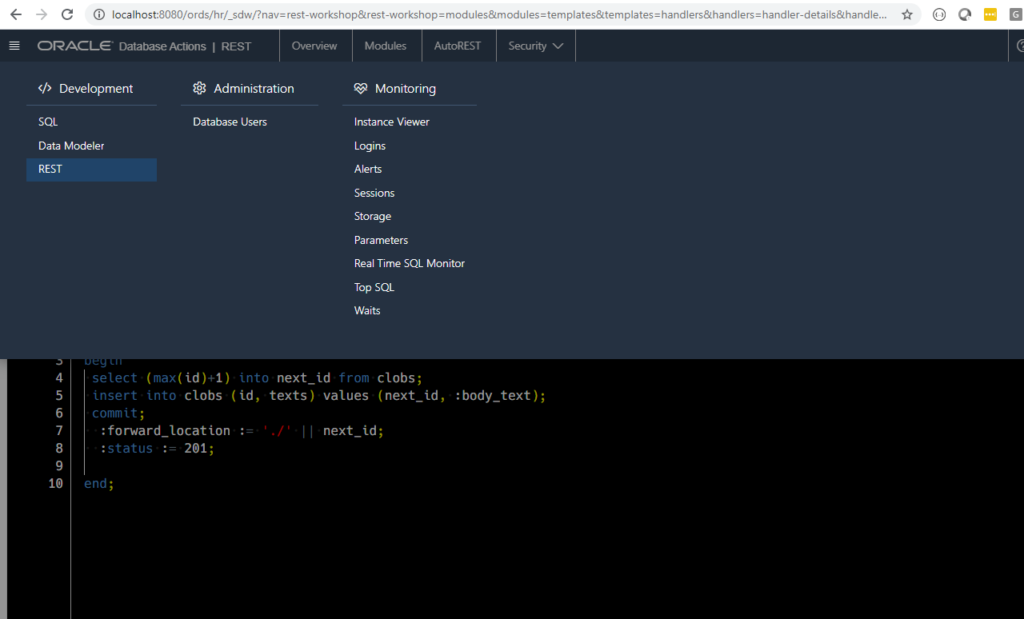
There you can find a modules page, and select your REST Module.
Browsing ORDS REST Module Templates…
You could search using SQL Developer Desktop’s Find DB Object panel…
Or you could query the data dictionary!
I’m going to look at USER_ORDS…stuff.
We have _MODULES, _TEMPLATES, and _HANDLERS – most of what you’ll want is there.
SELECT
name,
uri_prefix,
uri_template,
method,
source_type,
source
FROM
user_ords_modules a,
user_ords_templates b,
user_ords_handlers c
WHERE
a.id = b.module_id
AND b.id = c.template_id
ORDER BY 1,2,3,4;
What all do I have access to?
Let’s ask the worksheet what it can see for USER_ORDS_
And ‘yes!’ there are DBA_ dictionary view options as well.

Want a data model? If we go RE the ORDS_METADATA schema to a design, we get something like this:
Ok, let’s re-investigate a Modeling trick.
We’re going to:
- Find a driving table (ORDS_MODULES)
- Select it in the Navigator
- Right click and select ‘Add with dependencies’
- Send those to a SubView
And then we get something a bit easier to see/understand.
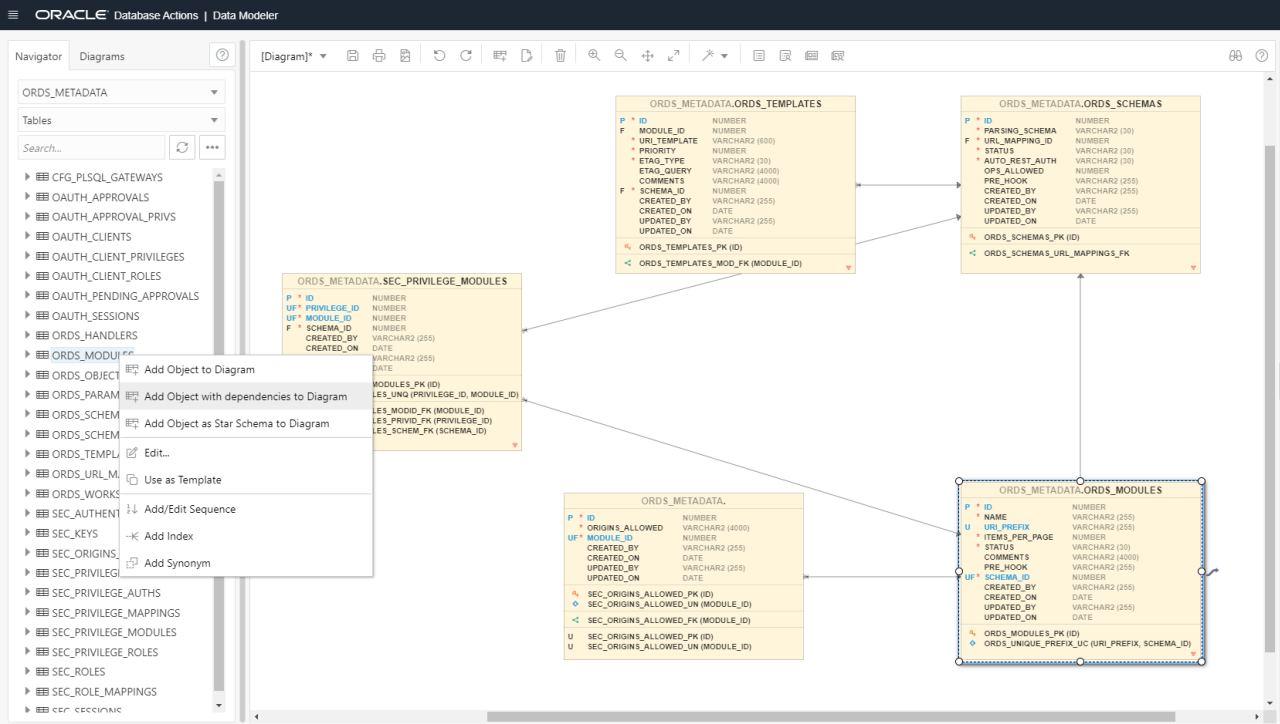
I’m showing you around the ORDS_METADATA schema – but stay out of it, just like you’d stay out of the SYS.X$ tables. Use the data dictionary views we give you to query stuff. And use the PL/SQL API to CHANGE your services, don’t live-edit the tables.
And Don’t Forget about the RESTful Way of Getting Your Services
Just hit the /metadata-catalog/ end point for your REST enabled schema.
Wait, what about my REST Enabled Tables, Views, and PL/SQL?
Oh yeah, those.
SELECT
parsing_schema "Schema",
parsing_object "Object",
object_alias "Alias",
auto_rest_auth "Authorization",
type "Type"
FROM
user_ords_enabled_objects
ORDER BY
parsing_schema,
parsing_object


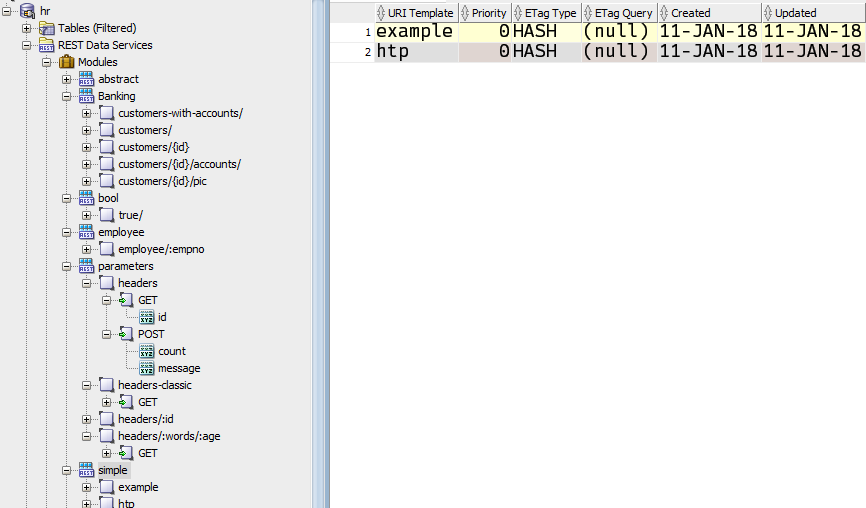


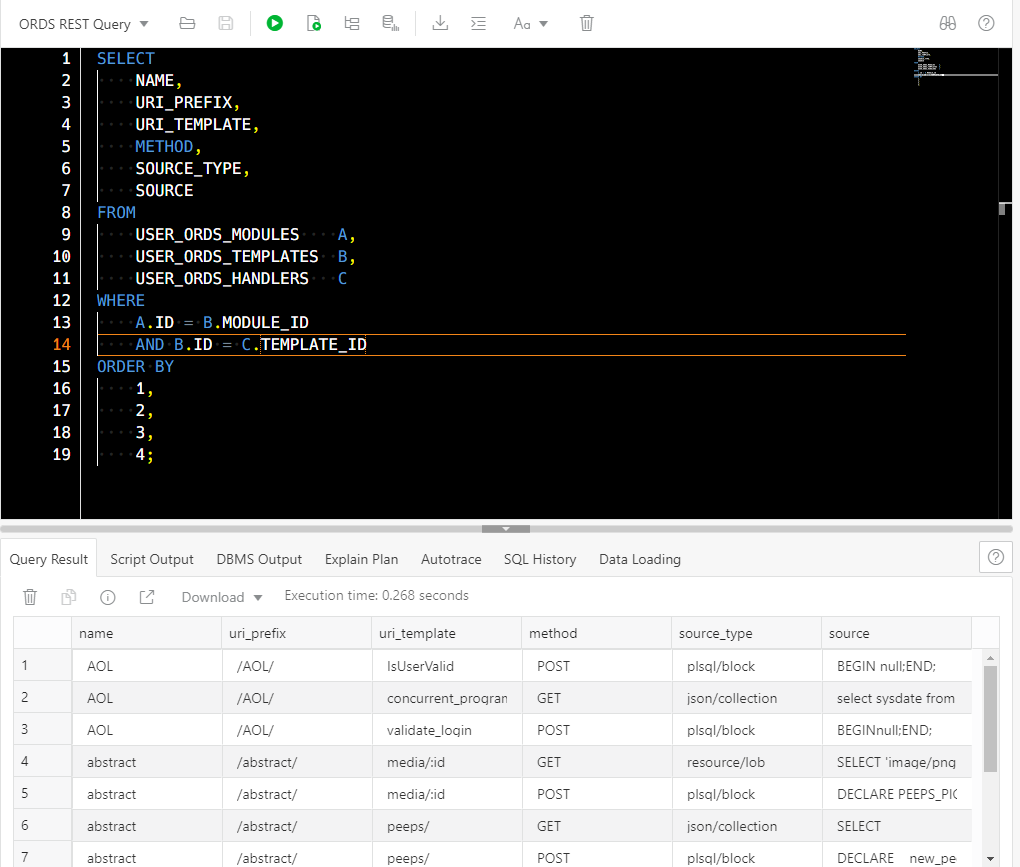
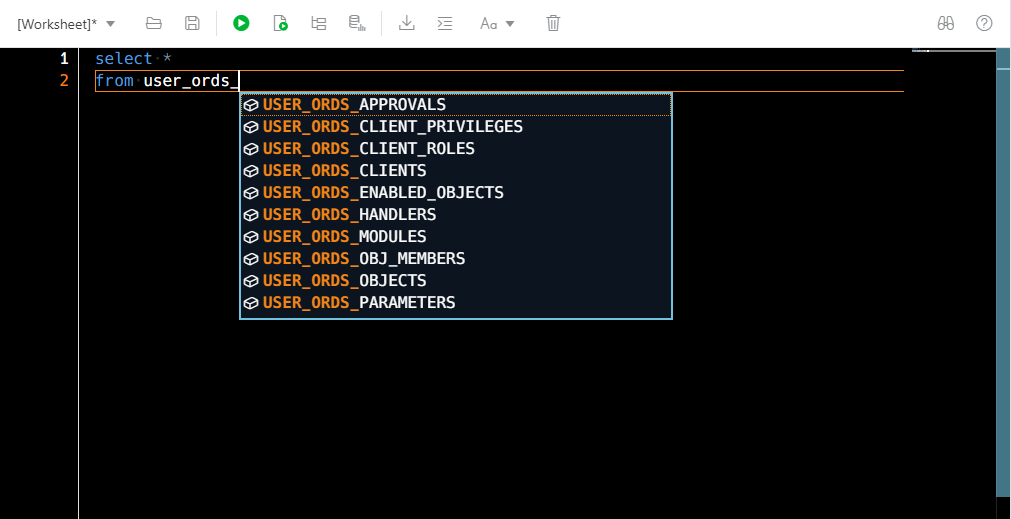
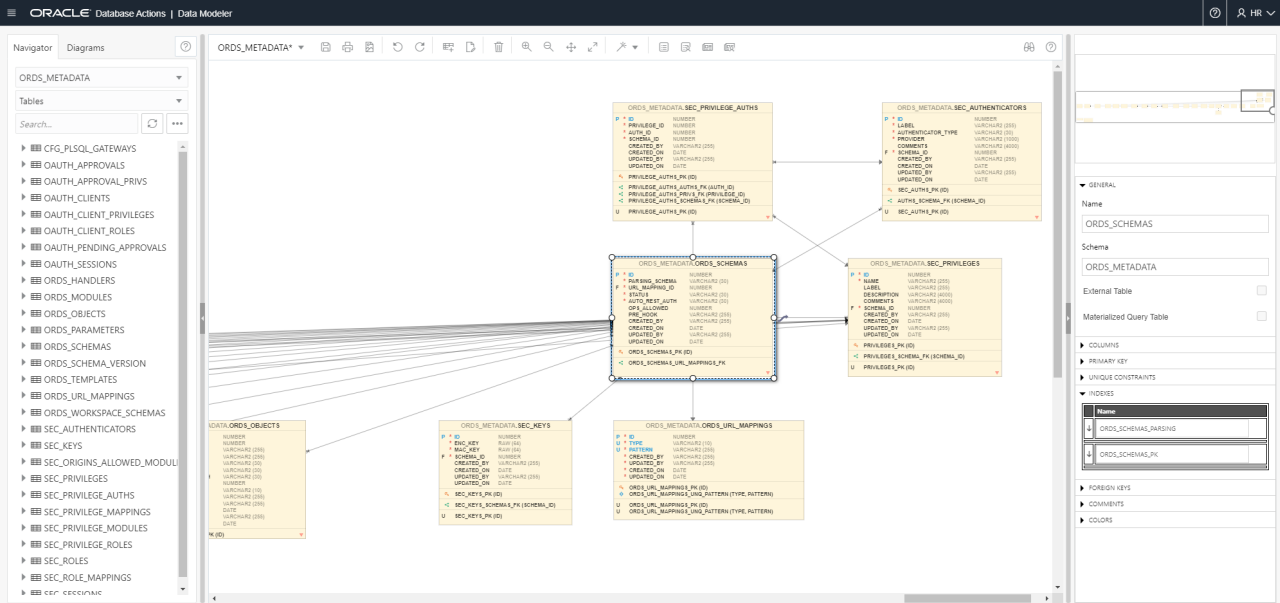
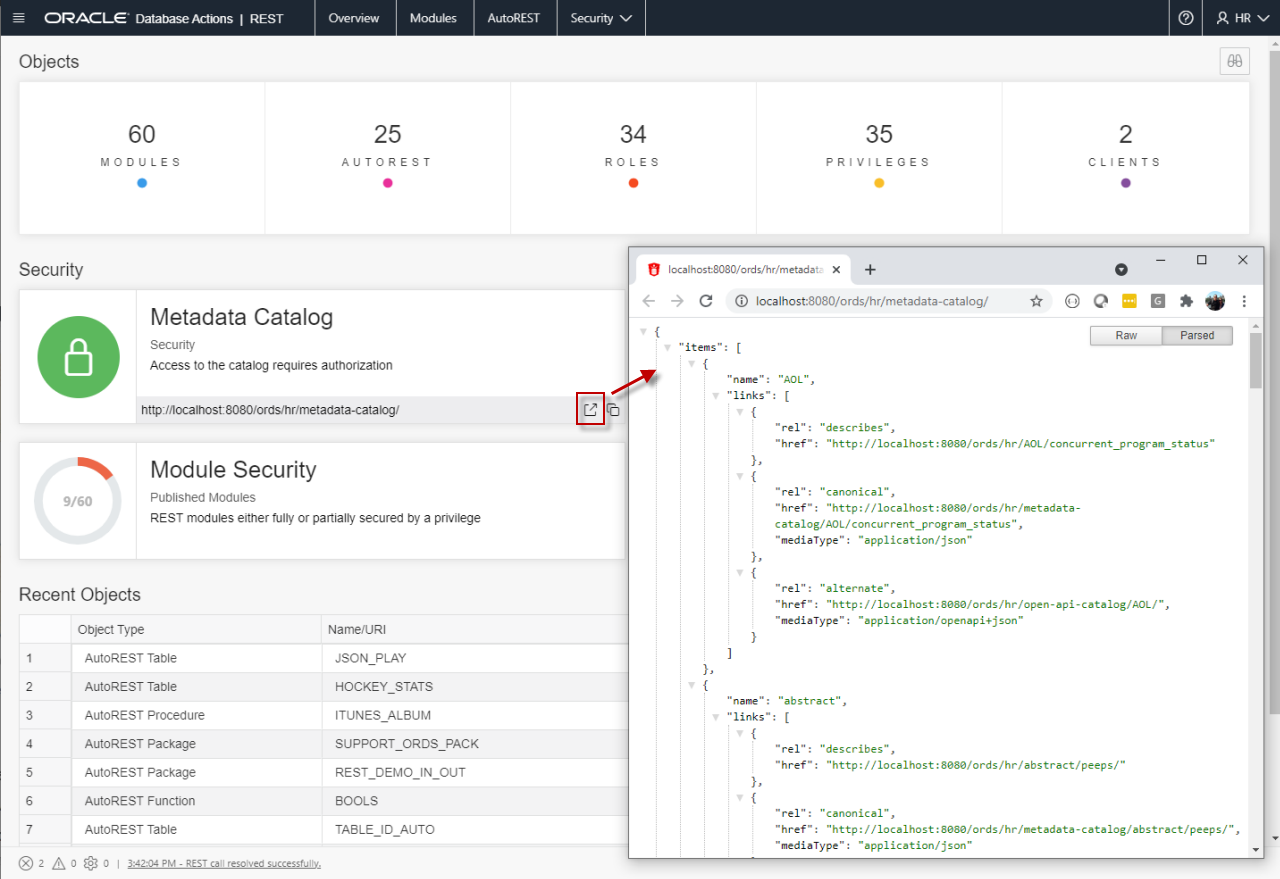
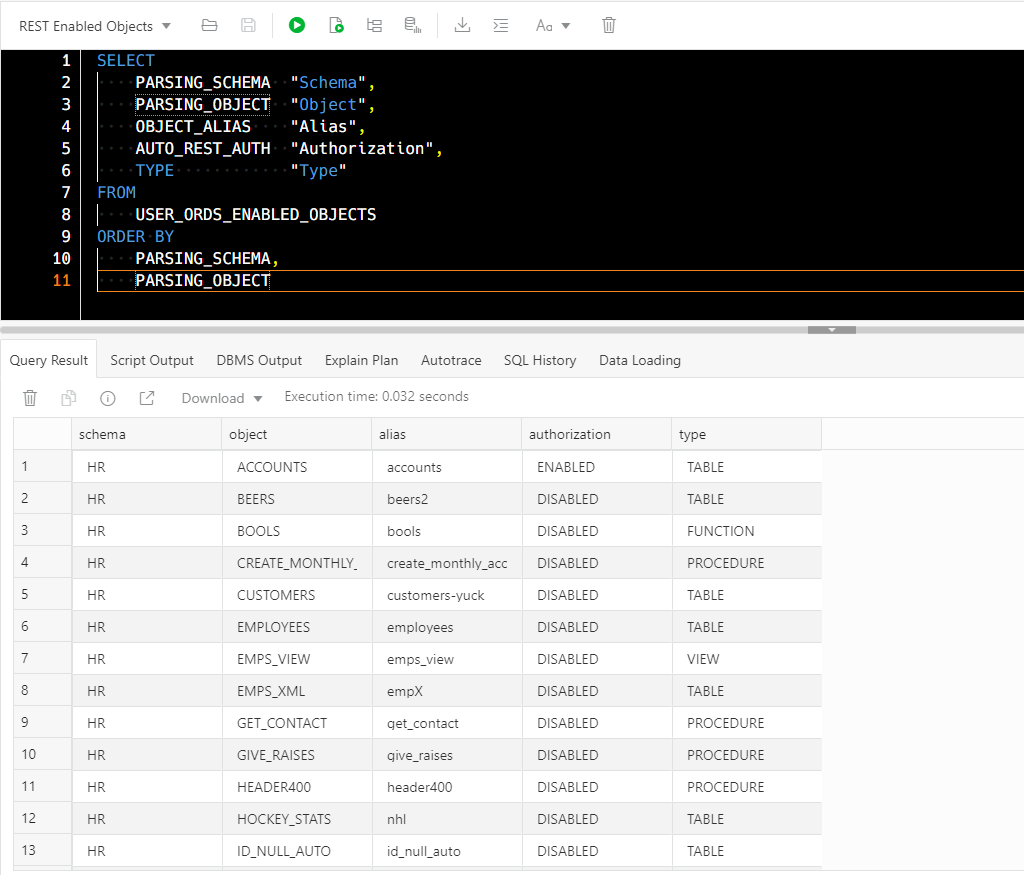
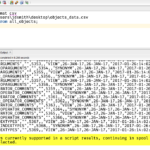
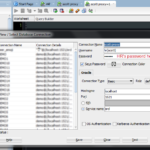
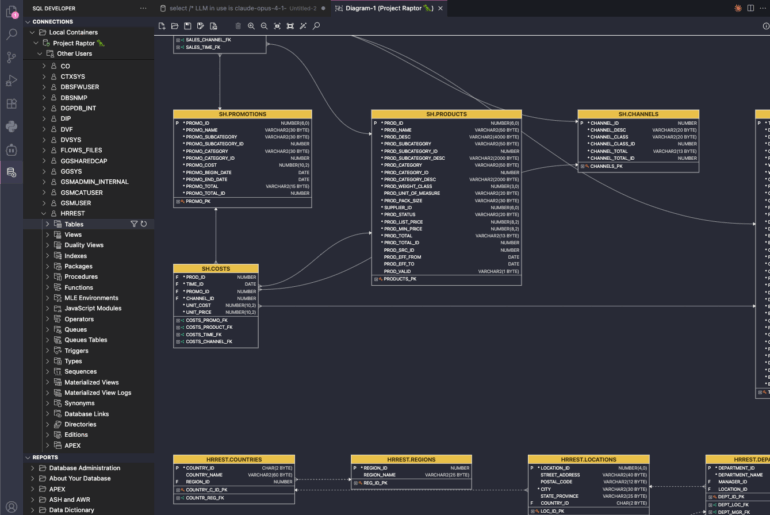


9 Comments
Creating a call to a oracle package (owned by the ORDS enabled schema). I have a table ar.ra_customer_trx_lines_all that is causing me to not get a response . I can run the same query as the schema owner in sqlplus and get data to return.
Is there some security issue I need to resolve with ORDS? The schema owner of the package has view access of this underlying table. I apologize in advance if I’m posting this in the wrong forum.
you’re calling a package (via ords POST or GET) which then works with this table?
Sounds like maybe it’s invoker rights issue…the person making the ords call (the rest enabled schema), is the person that the code runs as in the database
Hi Jeff,
This article is the closest I’ve found on ORDS tracking. We are doing a POC on Oracle ORDS and have done the basic install example using SQLDEVELOPER. We’ve created a few GET APIs and added some oAuth Security. Our two next steps are to deploy to Tomcat and to follow API calls (tracking). I have scoured the internet for an example of someone logging and tracking ORDS api calls and can’t find anything.
Our dream situation would be to have a dashboard or at least logs of dates, times etc of API calls. I assume we could log these ourselves but I also assume Oracle has a table that manages this. Please point me in the right direction any help would be appreciated.
Thanks,
Billy
There’s two levels of tracking:
ORDS doesn’t track things in a table, because the above should give everyone what they want…for free.
no, this is on a private network (not on the internet) and quite obscure. 99% of the traffic is “GET” publishing information to various web apps.
I did just test this, on the schema that the metadata-catalog was working, by re-enabling with p_auto_rest_auth => TRUE. then got the 401 on that schema. when I re-enabled the same schema with p_auto_rest_auth => FALSE it still gives the 401. in other words… by having tested this it now doesnt work and there does not seem to be a way to get it working again. bummer.
interesting… the metadata-catalog gets a 401 but ords/[schema]/open-api-catalog/ works. but it doesnt give the same information such as “members” which I had a quick app to automatically build grids from. Oh well. thanks for your help, I’ll have to devise some other tool for this.
what version of ORDS? can you start a thread on the forums so we can get to the root of the problem on this? sounds like a bug.
ive seen similar behavior when some of the URI patterns had a {} in it
Jeff,
I have several schemas enabled for ORDS. when I go to server/ords/schema/metadata-catalog/ in some it works fine but in 1 it’s getting 401-Unauthorized.
I’ve had this problem before and fixed it and can’t remember what I did, any help would be appreciated.
thanks!
Greg
did you secure the schema, a la